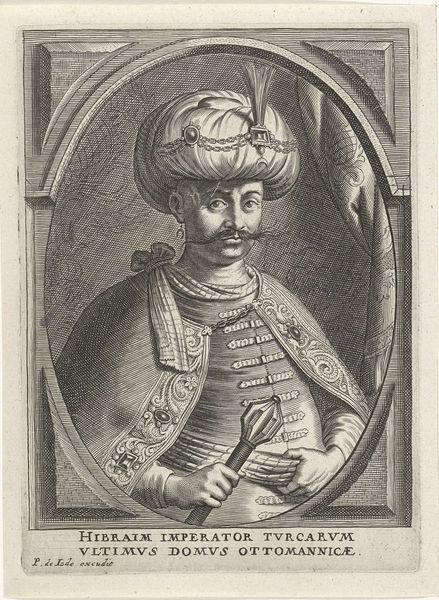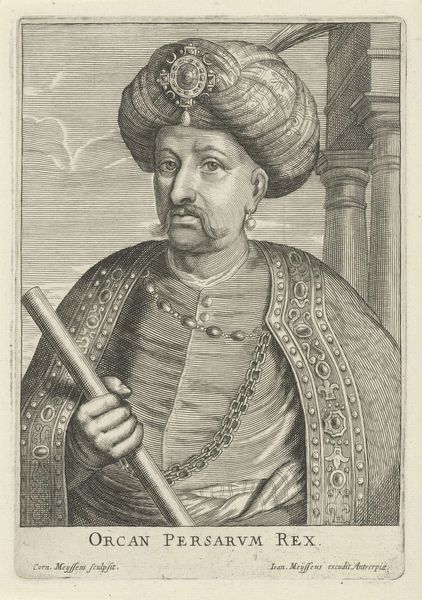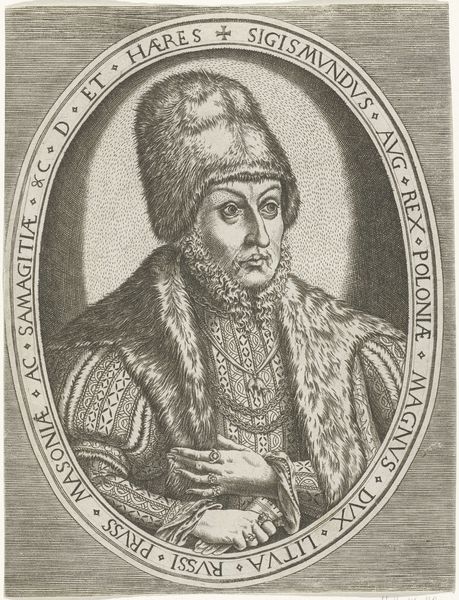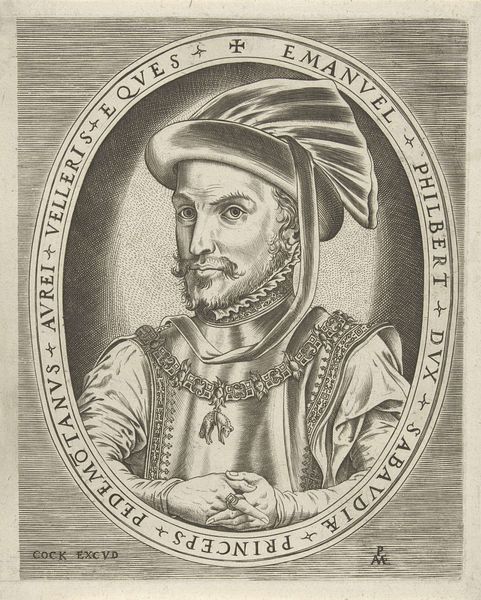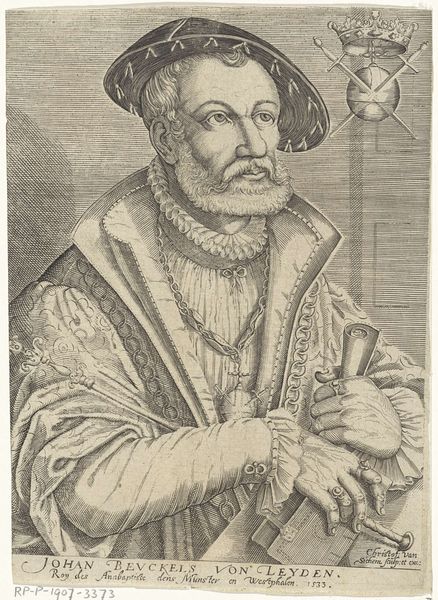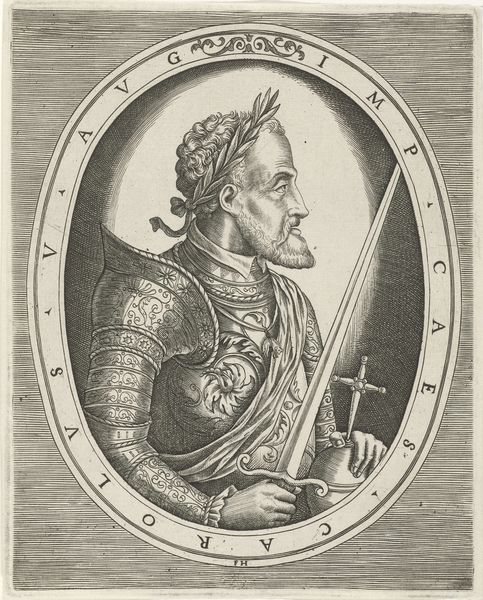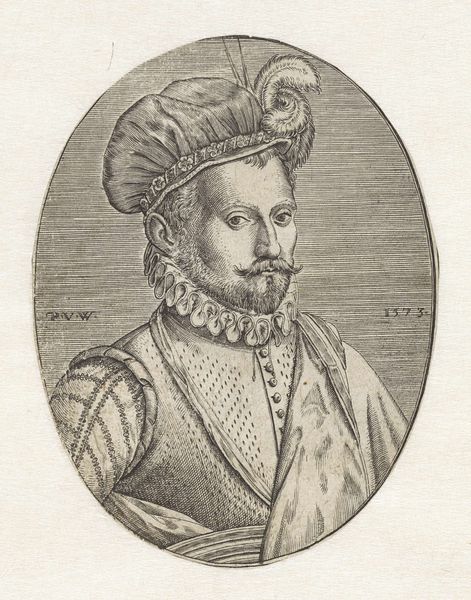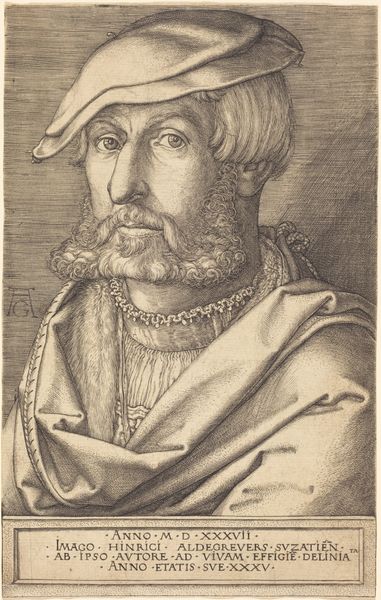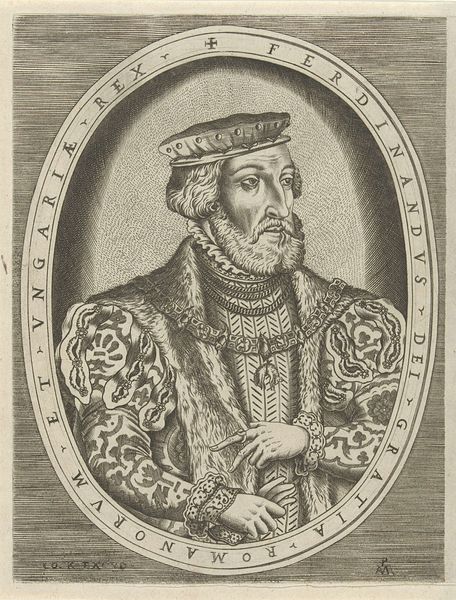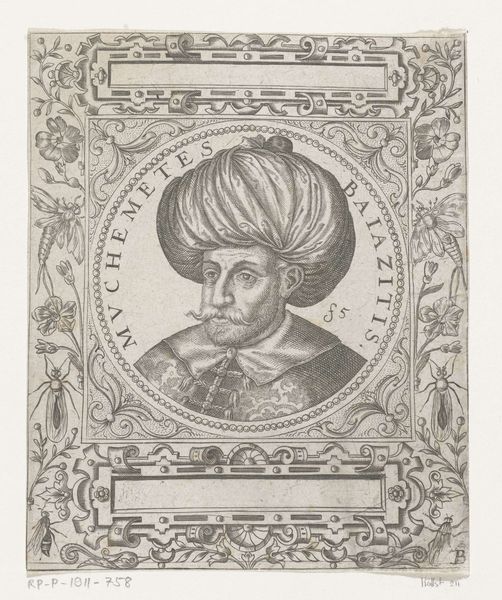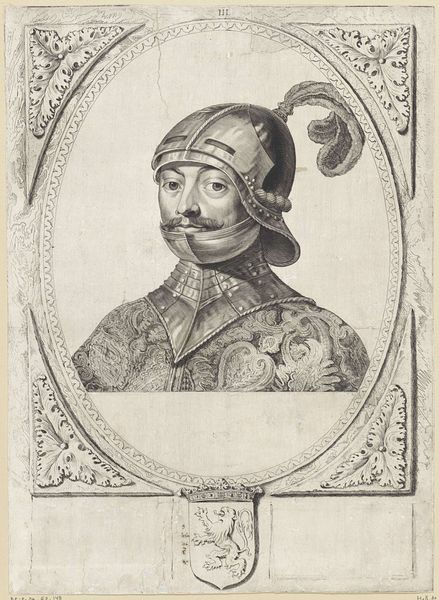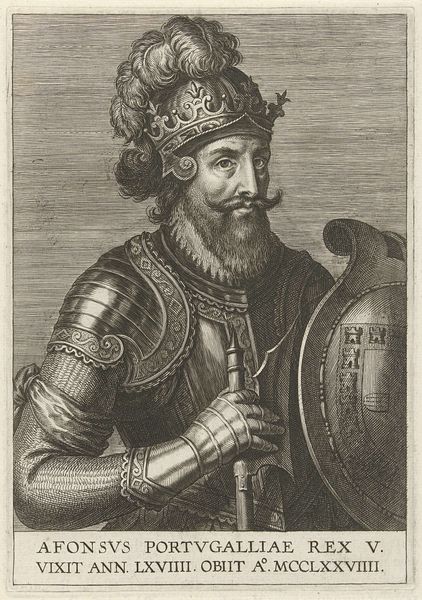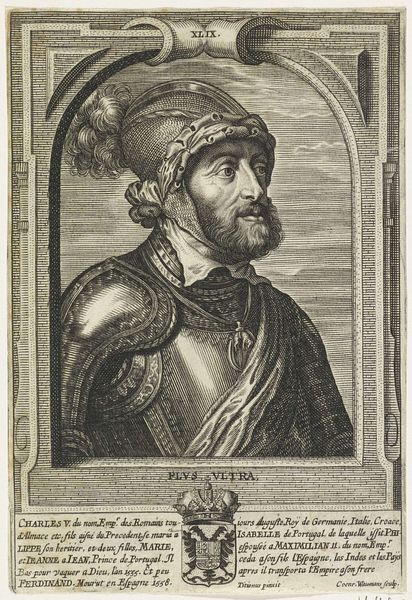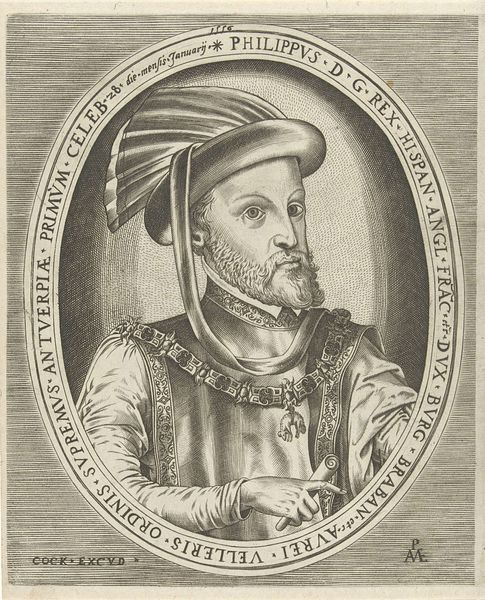
print, engraving
#
portrait
#
high-renaissance
# print
#
old engraving style
#
caricature
#
11_renaissance
#
portrait drawing
#
islamic-art
#
history-painting
#
engraving
Dimensions: height 195 mm, width 154 mm
Copyright: Rijks Museum: Open Domain
Curator: Here we have "Portret van Suleyman I de Grote," a High Renaissance engraving by Pieter van der Heyden, created sometime between 1540 and 1566. It's currently housed here at the Rijksmuseum. Editor: My first impression is one of stern authority. The meticulous detail of the engraving style, those incredibly fine lines, project a real sense of power, despite its relatively small size. Curator: Absolutely. Consider the context: Suleiman I, or Suleiman the Magnificent, ruled the Ottoman Empire during its golden age. This print, like many of the era, served as both portrait and propaganda, shaping perceptions of the East in European eyes. Editor: I'm immediately drawn to his turban. It's enormous! Clearly, a symbol of immense status and power. But look closer—the rendering, so precise, elevates the image from a simple likeness to something almost iconic. Curator: Exactly! And what about the strategic use of the image within broader narratives of the 16th century? Suleiman was seen simultaneously as a fearsome rival and a figure of considerable cultural sophistication. The image circulates between those perspectives. Editor: I also find the scepter resting on his shoulder intriguing. It suggests regality, justice, and the symbolic weight of his leadership—reminding me of similar royal symbols found across diverse cultures through history. A sign of dominion that transcended borders. Curator: It does serve as a direct visual link to contemporary European depictions of royalty, doesn’t it? Van der Heyden’s approach to this portrayal highlights and flattens cultural differences by recasting foreign symbols into a European understanding. Editor: Fascinating! Considering the fraught relationship between Europe and the Ottoman Empire at that time, you're right. These portraits must have played a complex role in the construction of identity, power and the 'other.' Curator: Precisely. This work encapsulates the political and cultural tensions of its era, serving as both an image of a powerful ruler and a symbol within European political discourse. Editor: Reflecting on it, the impact is less about the man himself, but instead how it helped forge an understanding of empire, of leadership, through symbols that resonated across time.
Comments
No comments
Be the first to comment and join the conversation on the ultimate creative platform.
